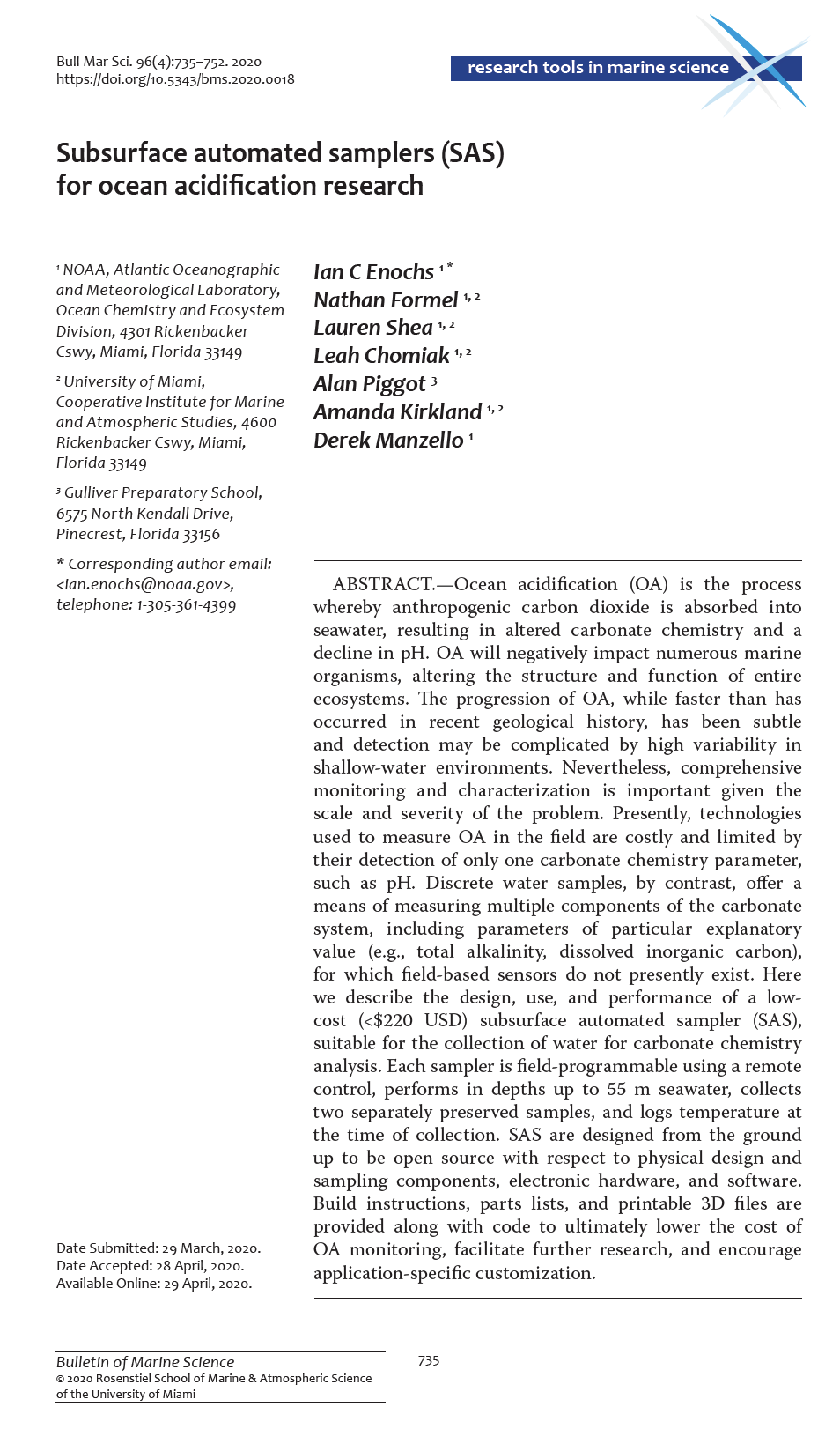ENOCHS, I.C., N. FORMEL, L. SHEA, L. CHOMIAK, A. Piggot, A. KIRKLAND, and D. MANZELLO. Subsurface automated samplers (SAS) for ocean acidification research. Bulletin of Marine Science, 96(4):735-752 (https://doi.org/10.5343/bms.2020.0018) (2020).
Abstract:
Ocean acidification (OA) is the process whereby anthropogenic carbon dioxide is absorbed into seawater, resulting in altered carbonate chemistry and a decline in pH. OA will negatively impact numerous marine organisms, altering the structure and function of entire ecosystems. The progression of OA, while faster than has occurred in recent geological history, has been subtle and detection may be complicated by high variability in shallow-water environments. Nevertheless, comprehensive monitoring and characterization is important given the scale and severity of the problem. Presently, technologies used to measure OA in the field are costly and limited by their detection of only one carbonate chemistry parameter, such as pH. Discrete water samples, by contrast, offer a means of measuring multiple components of the carbonate system, including parameters of particular explanatory value (e.g., total alkalinity, dissolved inorganic carbon), for which field-based sensors do not presently exist. Here we describe the design, use, and performance of a low- cost (<$220 USD) subsurface automated sampler (SAS), suitable for the collection of water for carbonate chemistry analysis. Each sampler is field-programmable using a remote control, performs in depths up to 55 m seawater, collects two separately preserved samples, and logs temperature at the time of collection. SAS are designed from the ground up to be open source with respect to physical design and sampling components, electronic hardware, and software. Build instructions, parts lists, and printable 3D files are provided along with code to ultimately lower the cost of OA monitoring, facilitate further research, and encourage application-specific customization.
